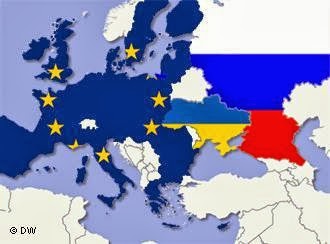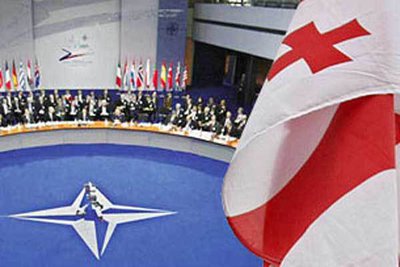[captionpix align=”left” theme=”elegant” width=”300″ imgsrc=”http://natoassociation.ca/wp-content/uploads/2014/02/NATO-ukraine-Russia.jpg” captiontext=””]
Following the end of the Cold War, many scholars debated whether or not NATO could survive in an environment lacking a common enemy and common purpose. Nonetheless, despite the debates over its longevity, NATO member states have remained committed to maintaining the security alliance, and have rebranded the Alliance for a new security environment.
In the last 20 years, the majority of threats to NATO member states have come from outside NATO’s borders. Particularly since the dawn of the 21st century, NATO’s priorities have been issues such as terrorism, cyber security, and maintaining an effective alliance, complete with cooperation and burden sharing amongst all members. Nonetheless, as some scholars have pointed out, some of the issues affecting NATO lie closer to the strategic interests professed immediately following the Cold War.
Following the collapse of the Soviet Union, NATO’s main priorities were identified as fostering dialogue and cooperation with former adversaries in the Warsaw Pact and to “manage” conflicts in areas on the European periphery. At the time, the primary focus was the Balkans and the instability growing in the Former Yugoslavia. Despite decades of relative peace and demilitarization in Europe, as Jolyon Howorth points out in an article for Foreign Policy, “destabilization hovers around the EU’s entire periphery.”
Never has this been more apparent than in the past couple of weeks, with violence in Ukraine. Demonstrations started in the capital city of Kyiv in response to the Ukrainian Government’s decision on November 21 not to sign an agreement on broader integration with the European Union. This came despite the fact that it had previously been believed that President Viktor Yanukovych was steering the country towards European Union integration until he rejected the EU trade deal days before it was due to be signed.
On Jan. 19, the signing of new laws that restricted the right to assemble, criminalized wearing helmets and masks and authorized the use of deadly force amongst other things, brought nearly 100,000 people back to the streets. The protests that had been peaceful, erupted into violence when nearly 5 people, including a police officer, were killed last week.
Since then, the situation in Ukraine has been on a knife’s edge, not only with the public, but with politicians as well, as dialogue between the Government and the official opposition has stuttered. At the moment, according to the BBC, Ukraine’s parliament is debating an amnesty for the scores of protesters detained since demonstrations began, in the hope of calming the unrest. Nevertheless, this has not stopped many Ukrainians, including ex-president Leonid Kravchuk, from claiming that Ukraine may be on the brink of a civil war.
It is clear that the catalyst for the civil unrest has been the tug-of-war for influence between Moscow and Brussels. Although, Ukraine has not sought NATO membership as quickly as some other former Soviet states have, cooperation between NATO and Ukraine has steadily increased in the post Cold-War era since Ukraine signed the Charter on a Distinctive Partnership with the organization that created the NATO-Ukraine council in 1997. The same increase in cooperation could also be seen with Ukraine and the EU prior to the rejection of the trade deal and all signs pointed to an inevitable European Union agreement between Kyiv and Brussels.
However, pressure from Russia has greatly influenced the former Soviet Socialist Republic since then and has caused the government to reconsider the EU deal thus, fuelling popular protest. As NATO Secretary General Anders Fogh Rasmussen stated in le Figaro daily, “An association pact with Ukraine would have been a major boost to Euro-Atlantic security, I truly regret that it could not be done… The reason is well-known: pressure that Russia exerts on Kyiv.” As a result, it has caused many European NATO states, included former Soviet state’s such as Poland, to condemn the violence and restrictions to civil liberties in Ukraine and attempt to exert political pressure on Ukraine’s government.
Although there has been relative peace on the European front since the beginning of the 21st century, and although many of NATO’s perceived present-day threats come from “Out of area”, the recent instability in Ukraine highlights the fact that instability within Europe is still very much a reality, and the burden may fall on NATO to take care of the instability within European borders yet again. Furthermore, the recent instability highlights the fact that some old divisions that may have been ignored since NATO’s post-Cold War rebranding, still exist and still pose a threat to European security. As Rasmussen pointed out, cooperation between NATO and Russia had improved in some areas. Nonetheless, he was deeply critical of Russia’s role in Eastern Europe, stating that NATO and Russia have “real differences and real issues,” and that “It’s obvious that Russia’s attitude is clearly hostile to the [NATO] Alliance opening to the east.”




